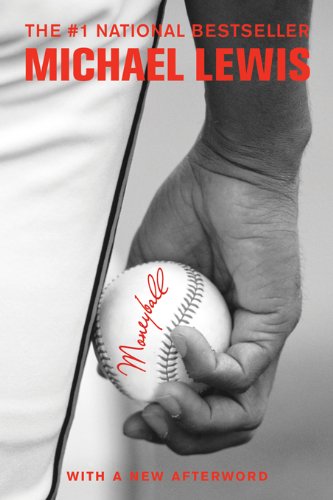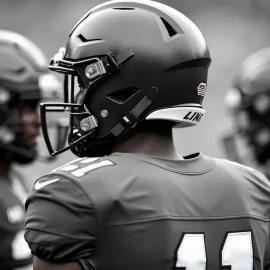

This article is an excerpt from the Shortform summary of "Moneyball" by Michael Lewis. Shortform has the world's best summaries of books you should be reading.
Like this article? Sign up for a free trial here .
What is on base percentage, and how does it factor into the strategy in Moneyball? Is on base percentage really the most important statistic?
In Moneyball, on base percentage is touted by Sabermetrics enthusiasts as one of the best predictors of player performance. Sabermetrics argues that on base percentage offers the most opportunity to players to create runs, and is most likely to lead to wins.
Undervalued vs. Overvalued Metrics
In 1995, as Billy Beane is working his way up the ranks of the Oakland organization, the new owners of the A’s demand that the team drastically reduce payroll. The team must now economize, making sure that every dollar spent on players contributes to on-field success.
This occurs during an era of skyrocketing player salaries, driven by the rise of free agency, which profoundly changes the economics of professional baseball. Rich teams like the New York Yankees and the Boston Red Sox are able to spend unlimited sums in order to acquire the biggest stars on the free agent market. But relatively poor teams like the A’s are forced to take a new approach to player acquisition, looking for players who are undervalued by the market and can be gotten on the cheap.
At this time, many of baseball’s most widely used statistics to evaluate baseball players are coming under fire. These critics (including the A’s general manager as well as a baseball writer named Bill James) note, for example, that team batting average is overrated because it overlooks the importance of walks to a team’s total offensive output. Likewise, James criticizes the RBI as a product of luck: a batter must have the good fortune to be at bat when other players are already on base to be able to bring them home with a hit. It is a matter of luck to even have the opportunity to score an RBI.
James contrasts this with statistical measures that had been overlooked by professional baseball. MLB On base percentage in baseball, he argues, has a better correlation with run production than batting average, because it accounts for all the ways a player can get on base and contribute offense: including walks.
Despite this, players with high batting averages and low error counts are highly valued, while players with lots of walks and a high MLB on base percentage (but who aren’t flashy sluggers with high batting averages) are deeply undervalued. Yet teams continue making poor (and expensive) personnel decisions based on flimsy information, despite the availability of better data.
The world of professional baseball ishostile to this statistics-based criticism, refusing to take seriously ideas from which they would clearly benefit. But Bill James does have one devoted reader, who soon puts his ideas into practice at baseball’s highest level—Billy Bean
The Deficiencies of the Naked Eye
One of James’s main insights is that the naked eye is a poor tool for measuring baseball performance. Statistically significant data, accumulated over long periods of time, offers a much better guide.
Travelling around the country looking for baseball talent, a professional scout might only see small snippets of any given player’s overall performance. In isolation, these tiny sample sizes can lead to wild inaccuracies in judgement about a player’s worth. On any given night, after all, a player with a .275 on base percentage can play better than his teammate with a .350 on base percentage.
Yet, James notes, these chance observations of players are informing baseball decisions at the highest levels. Teams are making ludicrous personnel decisions and deciding who does and doesn’t get to be a professional baseball player based on the very flimsiest information. This outrages James, especially in an era of skyrocketing baseball salaries. If players are going to be paid exorbitant sums, it makes sense to figure out exactly what they’re worth. A grotesque market failure, a gross misallocation of precious resources, is at the heart of professional baseball.
Moreover, James is exasperated by the fact that good data actually is available. Rapid advances in computer technology during the 1970s and 1980s have lowered the cost of acquiring and analyzing baseball statistics, certainly for wealthy MLB teams. But the teams choose to squander this opportunity, relying on bad conventional wisdom and outmoded heuristics to decide who should and shouldn’t become a professional baseball player.
The small cadre of people who actually run professional baseball teams is determined to exclude outside voices and opinions, even if that means losing games. They prefer to do things their way than take advice from a bunch of pencil-pushers droning on about MLB on base percentage in baseball and runs created formulas. They are profoundly uninterested in using baseball statistics in an analytical way. In fact, in the early 1980s, the earliest participants in what later becomes the phenomenon of fantasy sports are more interested in getting their hands on good baseball data than the teams themselves—even though these fans stand to gain far less from such knowledge.
On base percentage in baseball was one of the key metrics used by Billy Beane and his team in Moneyball. On base percentage helped the Oakland A’s build their team, and eventually get to the playoffs.

———End of Preview———
Like what you just read? Read the rest of the world's best summary of Michael Lewis's "Moneyball" at Shortform .
Here's what you'll find in our full Moneyball summary :
- How Billy Beane first flamed out as a baseball player before becoming a general manager
- The unconventional methods the Athletics used to recruit undervalued players
- How Sabermetrics influences American baseball today






